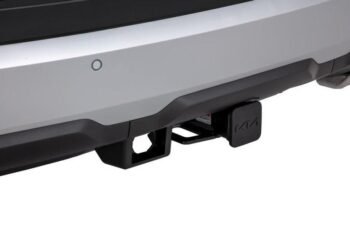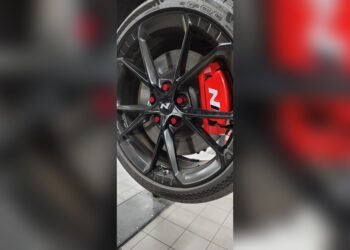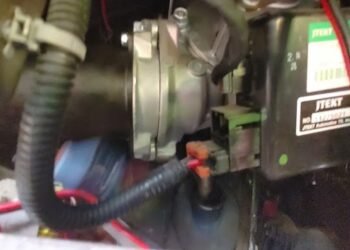When it comes to your exhaust system, choosing the right pipe can make all the difference. You might have heard about galvanized pipe for exhaust and wondered if it’s the best option for your needs.
Before you make a decision, it’s important to understand how galvanized pipes behave under high heat and what risks they might pose. Could using galvanized pipe save you money upfront but cost you more in the long run? Or is there a smarter choice that keeps your system safe and efficient?
Keep reading to discover the truth about galvanized pipes for exhaust, the hidden dangers you need to watch out for, and the best materials to protect your investment and your health. Your exhaust system deserves the right care—let’s make sure you get it.

Credit: hqtruckparts.com
Galvanized Pipe Basics
Galvanized pipes are steel pipes coated with a layer of zinc to protect against rust. This makes them a popular choice in many construction and industrial projects. Understanding the basics helps in knowing their benefits and limitations, especially for exhaust systems.
The zinc coating is key to their durability. It shields the steel from moisture and other elements that cause corrosion. This section breaks down how galvanized pipes are made and where they are commonly used.
Hot-dip Galvanizing Process
The hot-dip galvanizing process involves dipping steel pipes into molten zinc. The zinc melts and bonds to the steel surface. This creates a strong, durable layer that sticks tightly to the pipe.
The process also forms a metal-zinc alloy on the surface. This alloy adds extra protection against wear and rust. The thickness of the coating depends on the time spent in the zinc bath.
Protective Zinc Coating
The zinc coating acts as a barrier against water and air. It prevents rust by stopping moisture from reaching the steel underneath. Zinc also protects the pipe by corroding first, sacrificing itself to save the steel.
This sacrificial protection means the pipe lasts longer even in harsh environments. The coating keeps the pipe strong and reliable over time. It also reduces maintenance costs for many projects.
Common Uses
Galvanized pipes are widely used in water supply lines, fencing, and outdoor structures. They work well in places exposed to weather and moisture. Their rust resistance makes them ideal for these applications.
However, using galvanized pipes for exhaust systems is not recommended. High heat can cause the zinc coating to burn off. This releases harmful fumes and reduces the pipe’s lifespan.
For exhaust systems, steel pipes without zinc or special high-heat coatings are safer choices. Galvanized pipes suit many jobs but not all, especially where heat is extreme.
Exhaust System Requirements
Exhaust systems must meet strict requirements to function well and last long. Pipes used in these systems face tough conditions. They must handle heat, resist corrosion, and stay durable over time. Choosing the right pipe material is key to avoid problems and maintain safety.
High-temperature Challenges
Exhaust pipes get very hot from engine gases. Temperatures can rise above 1000°F. Materials must handle this heat without melting or warping. Some coatings, like zinc on galvanized pipes, can burn off at high heat. This can cause damage and release harmful fumes. Pipes need to maintain strength and shape under constant heat stress.
Corrosion Resistance Needs
Exhaust systems face moisture and chemicals from gases. These cause rust and corrosion over time. Pipes must resist this to last longer. Galvanized pipes have a zinc coating that protects against rust. But the coating can wear off with heat and time. Choosing corrosion-resistant materials helps prevent leaks and failures.
Material Durability
Pipes must stay strong against vibrations and road impacts. Cracks or breaks can cause exhaust leaks and noise. The material should resist wear and tear for many years. Galvanized steel is tough but can degrade under heat and chemicals. Durable pipes reduce repair costs and keep exhaust systems working safely.
Risks Of Galvanized Pipe In Exhaust
Using galvanized pipe in exhaust systems carries several risks. The zinc coating meant to protect the steel reacts poorly to heat. Exhaust pipes face very high temperatures. This can lead to safety and durability issues. Understanding these risks helps in choosing the right materials for exhaust setups.
Zinc Fume Toxicity
Galvanized pipes have a zinc layer. High heat causes this zinc to vaporize. Breathing zinc fumes can lead to metal fume fever. Symptoms include chills, fever, and coughing. These fumes pose health dangers during welding or pipe heating.
Coating Degradation
Heat damages the zinc coating on galvanized pipes. Once the coating breaks down, rust forms quickly. Rust weakens the pipe, causing leaks or breaks. This reduces the exhaust system’s lifespan and reliability.
Welding Hazards
Welding galvanized pipes releases toxic zinc vapors. These vapors can irritate the lungs and eyes. Proper ventilation and protective gear are essential. Ignoring safety leads to serious health problems.

Credit: truckpipe.com
When Galvanized Pipe Can Work
Galvanized pipe is often seen as a cost-effective option for many projects. Its zinc coating protects against rust and corrosion. Despite its benefits, galvanized pipe is not suitable for all exhaust uses. Understanding when galvanized pipe can work helps in making safer and smarter choices. This section highlights specific situations where galvanized pipe is appropriate for exhaust systems.
Low-temperature Applications
Galvanized pipe performs well in exhaust systems with low heat levels. These systems do not exceed temperatures that harm the zinc coating. For example, venting air from small appliances or cooling exhausts can use galvanized pipes safely. The zinc layer remains intact, preventing rust and damage. Such use ensures durability without health risks.
Short-term Use Cases
Temporary exhaust setups can benefit from galvanized pipe. Construction sites or events often need quick, short-term ventilation. Galvanized pipes are easy to install and remove. Since the exposure time to high heat is limited, the pipe’s coating stays effective. This option saves cost while providing adequate protection during brief use.
Industrial Venting
In some industrial processes, galvanized pipe can serve as venting ducts. These applications involve exhaust gases at moderate temperatures. The pipe’s zinc coating guards against moisture and mild corrosion. Industrial plants may use galvanized pipes for venting less aggressive fumes. Proper monitoring ensures the pipe remains safe and reliable over time.
Better Material Alternatives
Galvanized pipes are common for many uses, but they have limits for exhaust systems. The zinc coating on these pipes burns off at high heat. This causes rust and releases harmful fumes. Choosing better materials can improve safety and durability. Several options perform well under exhaust conditions.
Black Steel Pipes
Black steel pipes are strong and heat-resistant. They handle exhaust gases without rusting quickly. These pipes lack a zinc coating, so no toxic fumes form. They are widely used in automotive and industrial exhausts. Black steel is easy to weld and shape for custom systems.
Stainless Steel Options
Stainless steel pipes resist rust and corrosion very well. They maintain strength even at high temperatures. This makes them ideal for exhaust systems that face heat and moisture. Stainless steel costs more but lasts longer. It keeps exhaust fumes safe and prevents leaks.
Cost And Performance Comparison
Black steel pipes cost less than stainless steel. They offer good durability for moderate heat. Stainless steel is pricier but lasts many years without rust. Galvanized pipes may seem cheap but degrade fast in exhaust use. Investing in better materials saves money on repairs and health risks.
Safety And Compliance Tips
Safety and compliance are crucial when using galvanized pipe for exhaust systems. These pipes must meet specific standards to ensure they function well and do not pose health risks. Following the right guidelines helps prevent accidents and legal issues. Below are key tips to keep your exhaust installation safe and compliant.
Local Building Codes
Always check local building codes before installing galvanized exhaust pipes. Codes vary by location and set rules for materials and installation. Following these rules ensures your system passes inspections. Ignoring codes can cause fines or require costly changes later.
Proper Welding Practices
Use correct welding techniques to avoid damaging the galvanized coating. High heat can burn off zinc, releasing harmful fumes. Weld in well-ventilated areas and wear protective gear. Skilled welders minimize coating loss and maintain pipe strength.
Handling And Installation
Handle pipes carefully to avoid dents or scratches. Damage can expose bare metal to rust. Install pipes with proper supports to prevent sagging or stress. Tight connections reduce leaks and improve exhaust flow. Use gloves and tools that protect the pipe surface.
Maintenance For Longevity
Maintaining galvanized pipe for exhaust extends its useful life. Proper care prevents rust and damage. Simple steps help keep the pipe strong and reliable.
Regular maintenance reduces repair costs and avoids early replacements. Focus on rust prevention, inspections, and repairs for best results.
Rust Prevention
Galvanized pipes resist rust but can still corrode over time. Keep pipes clean and dry to stop moisture buildup. Apply rust-resistant coatings to damaged areas. Avoid exposure to harsh chemicals that break down zinc layers. Proper ventilation helps reduce condensation inside exhaust systems.
Regular Inspections
Check pipes often for signs of wear or damage. Look for rust spots, cracks, or peeling zinc coating. Inspect joints and connections to ensure tight seals. Use a flashlight to view hard-to-see areas. Early detection of issues prevents costly repairs.
Repair Strategies
Fix small rust spots by sanding and applying protective paint. Replace sections with severe corrosion to maintain safety. Use high-temperature sealants on joints to prevent leaks. Tighten loose fittings promptly to avoid exhaust leaks. Schedule professional inspections for thorough assessments.

Credit: www.truckpipestore.com
Frequently Asked Questions
Can You Use Galvanized Pipe For Exhaust?
Galvanized pipe releases toxic zinc fumes at high exhaust temperatures and degrades quickly. Use black or stainless steel instead for safety and durability.
What Kind Of Pipe Should I Use For Exhaust?
Use black steel or stainless steel pipes for exhaust systems. Avoid galvanized pipes due to toxic zinc fumes and quick rusting.
Is It To Code To Use Galvanized Pipe For Natural Gas?
Galvanized pipe is generally not allowed for natural gas due to corrosion and safety risks. Use black steel or approved piping instead. Always follow local codes for gas installations.
When Not To Use Galvanized Pipe?
Avoid using galvanized pipe for exhaust systems due to toxic zinc fumes and coating degradation at high temperatures. Choose black or stainless steel instead.
Can Galvanized Pipe Be Used For Exhaust Systems Safely?
Galvanized pipes release toxic zinc fumes when heated, making them unsafe for exhaust use.
Conclusion
Galvanized pipe is not the best choice for exhaust systems. Zinc coating can burn off and release harmful fumes. This makes it unsafe for high-heat use. The protective layer also wears away quickly under heat. Rust can form, reducing pipe life.
Welding galvanized pipe can expose you to toxic fumes. Safer alternatives like black steel or stainless steel work better. They handle heat without harmful effects. Choosing the right material keeps your exhaust system safe and durable. Always prioritize safety and long-lasting performance.

















